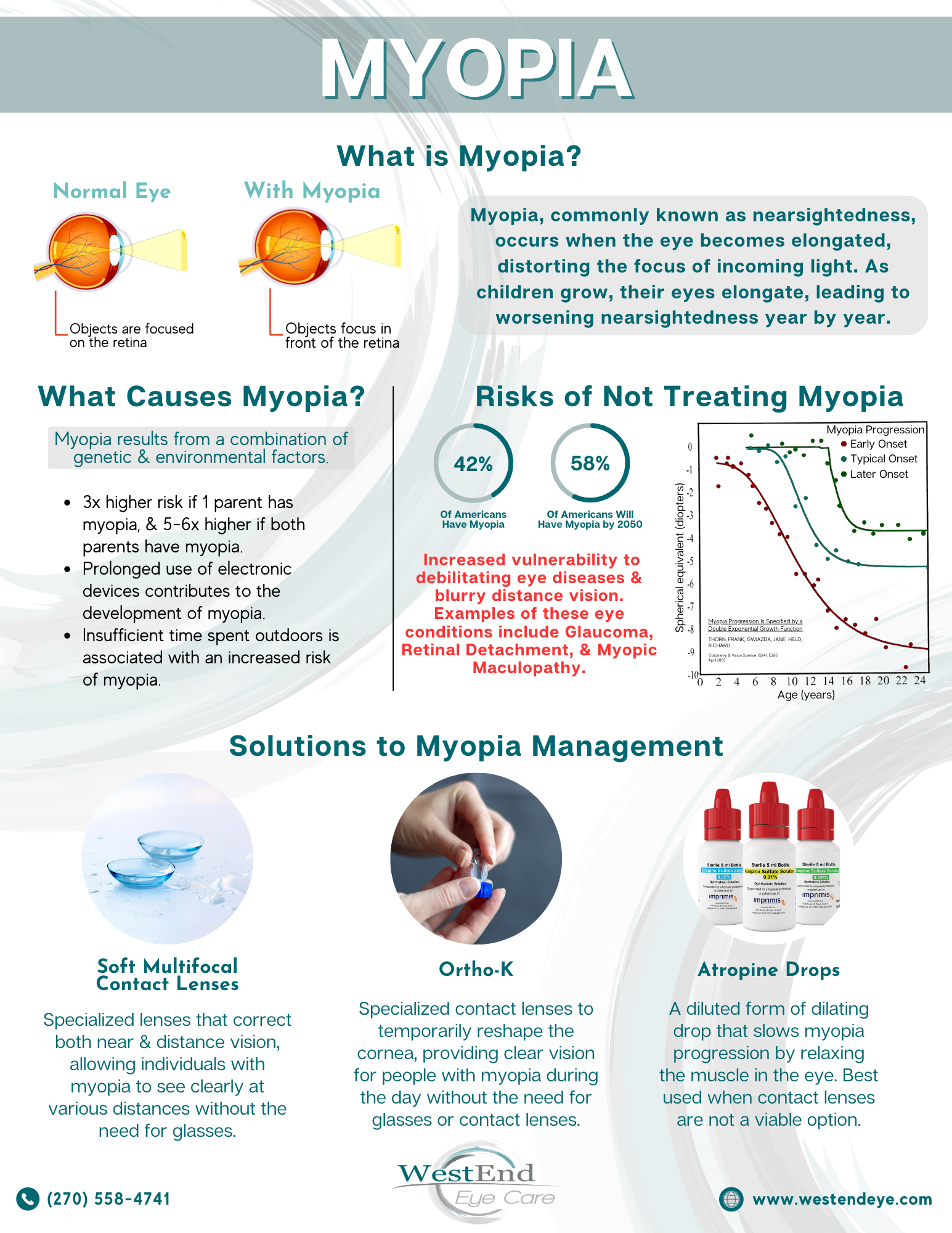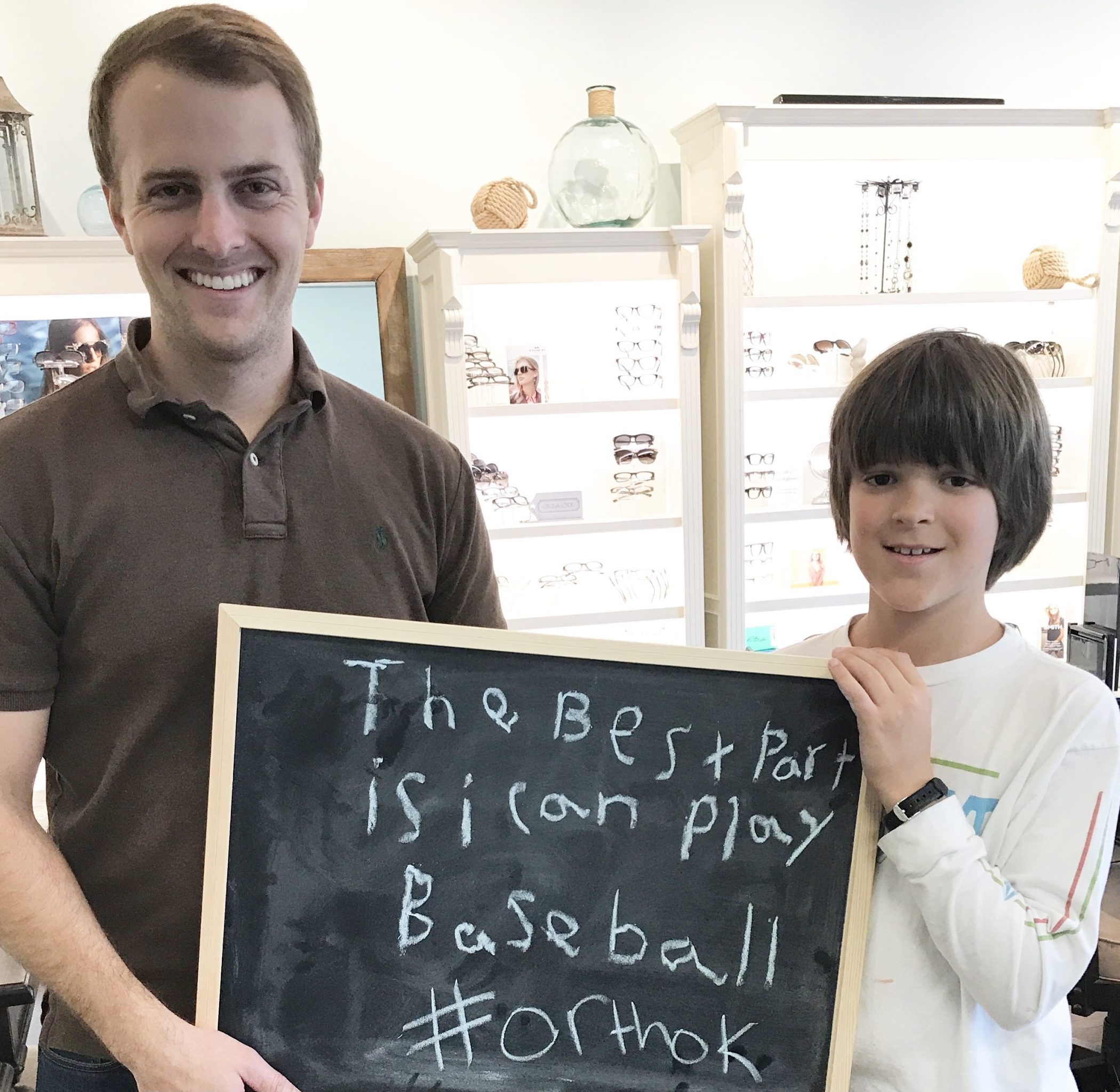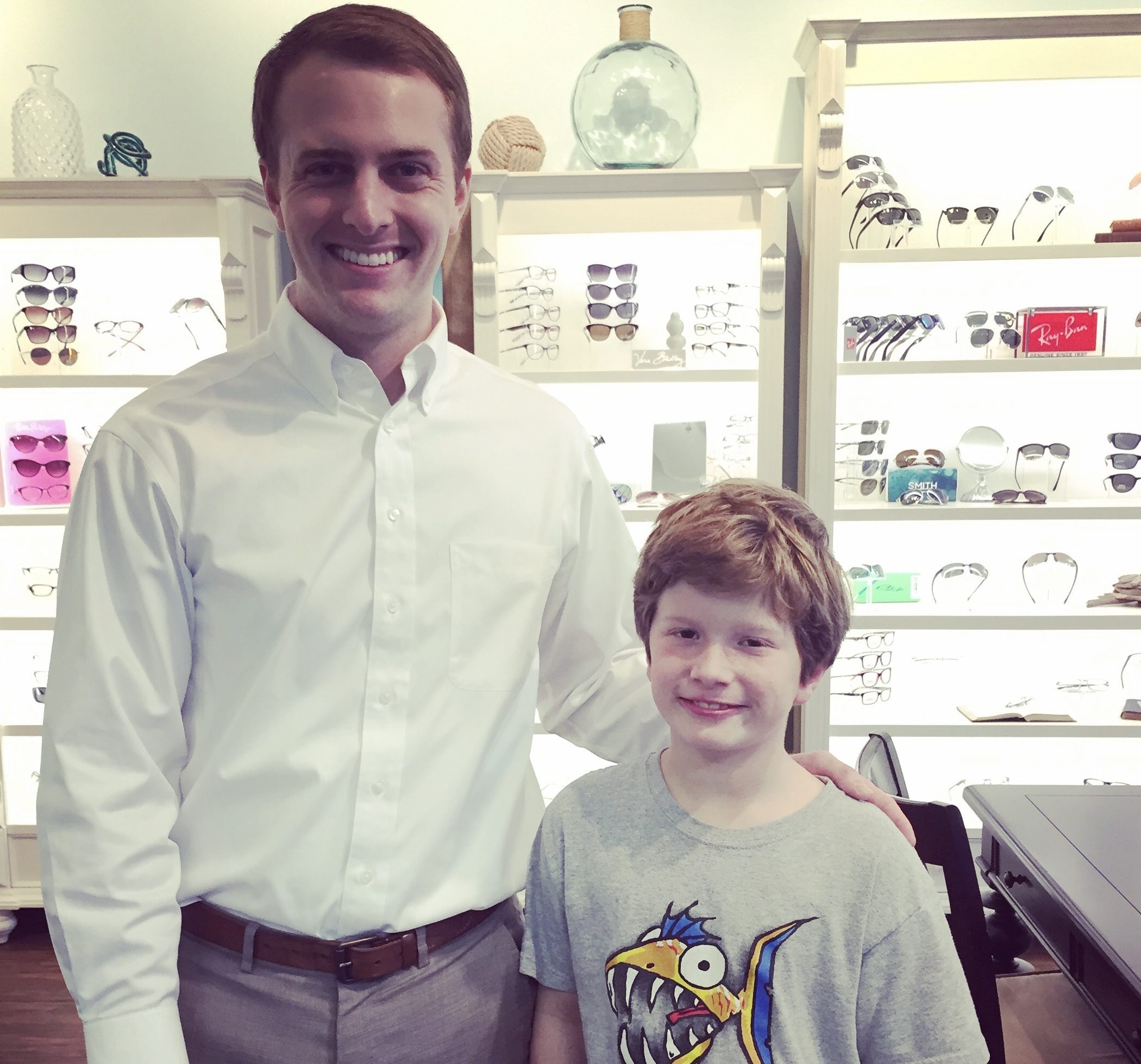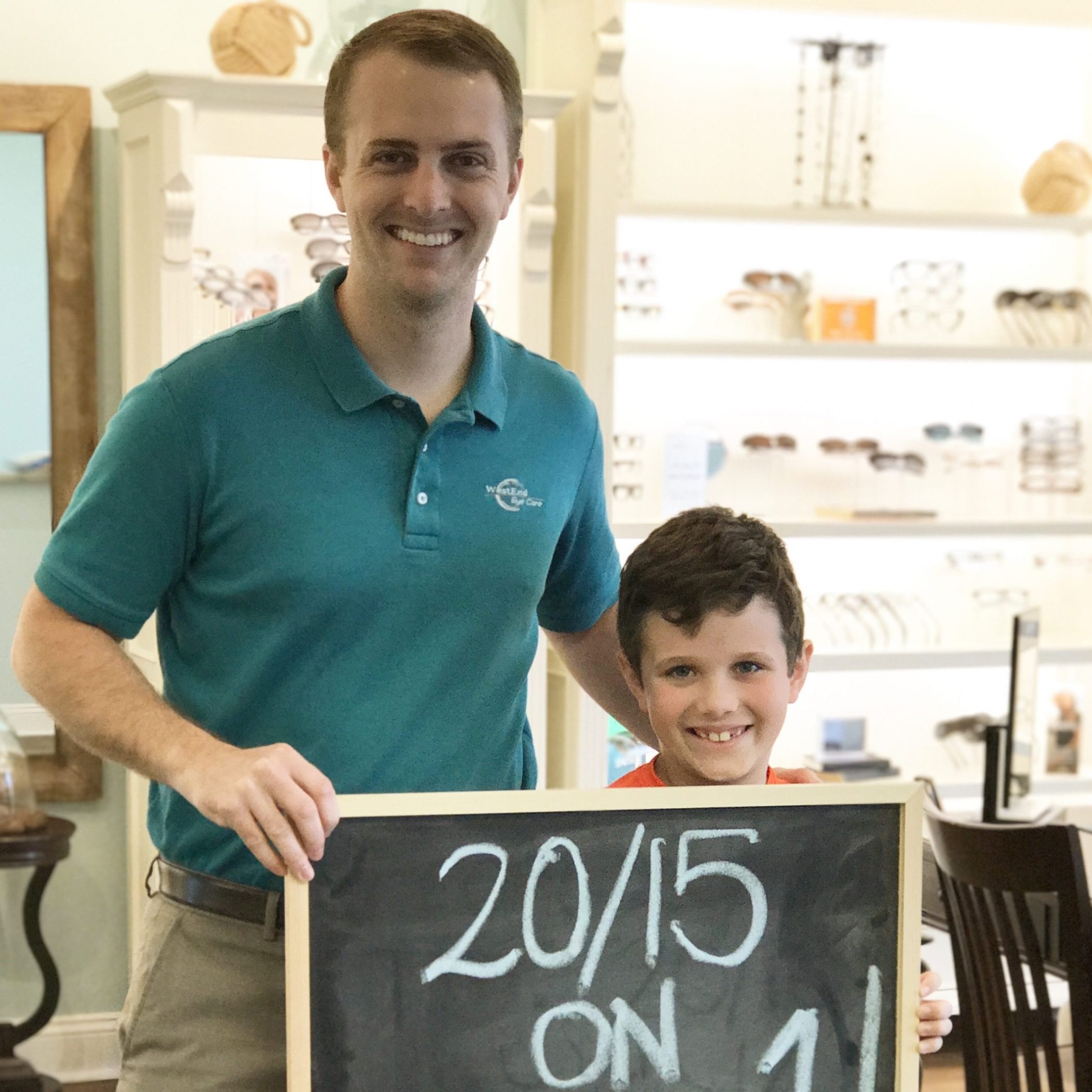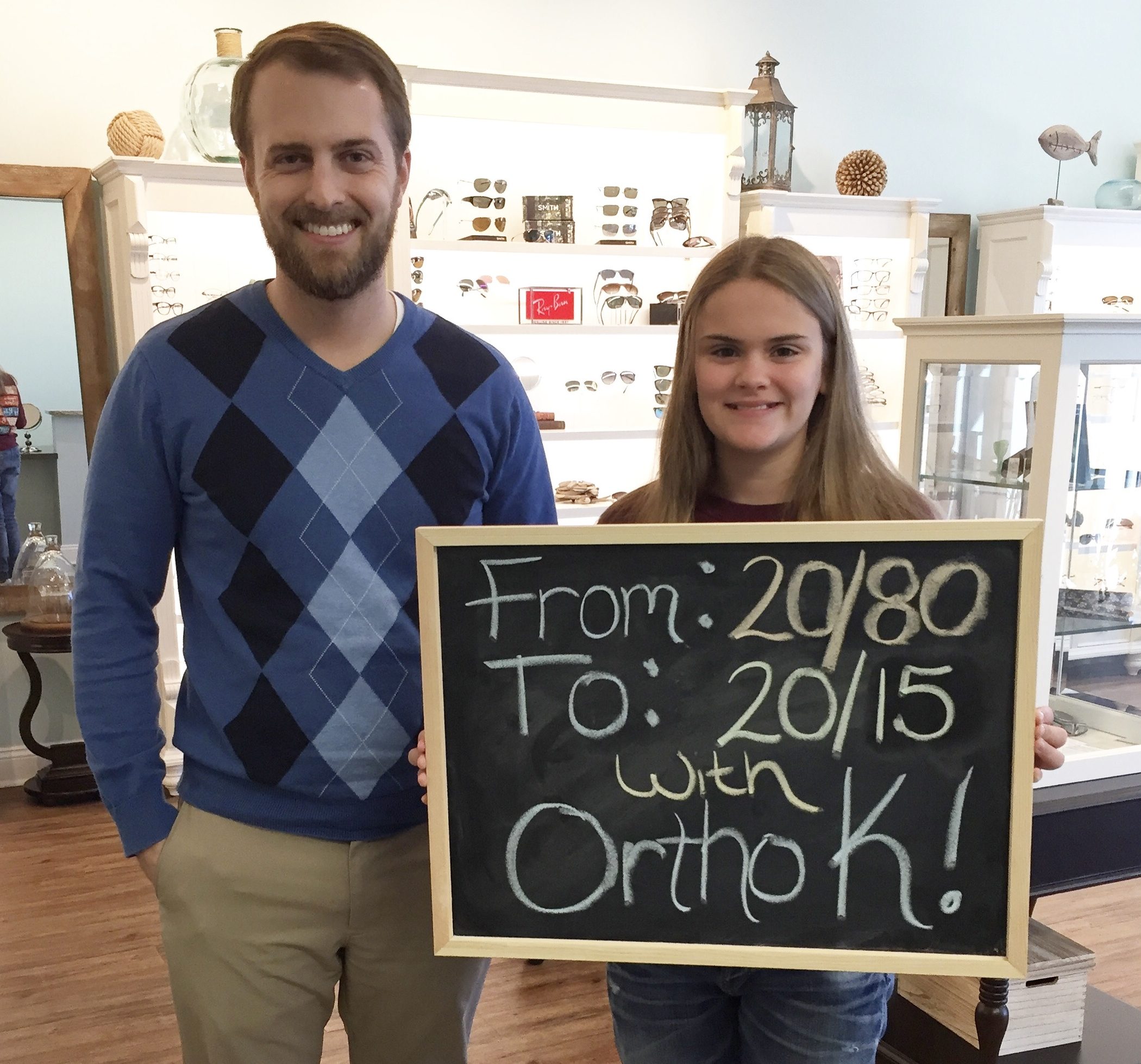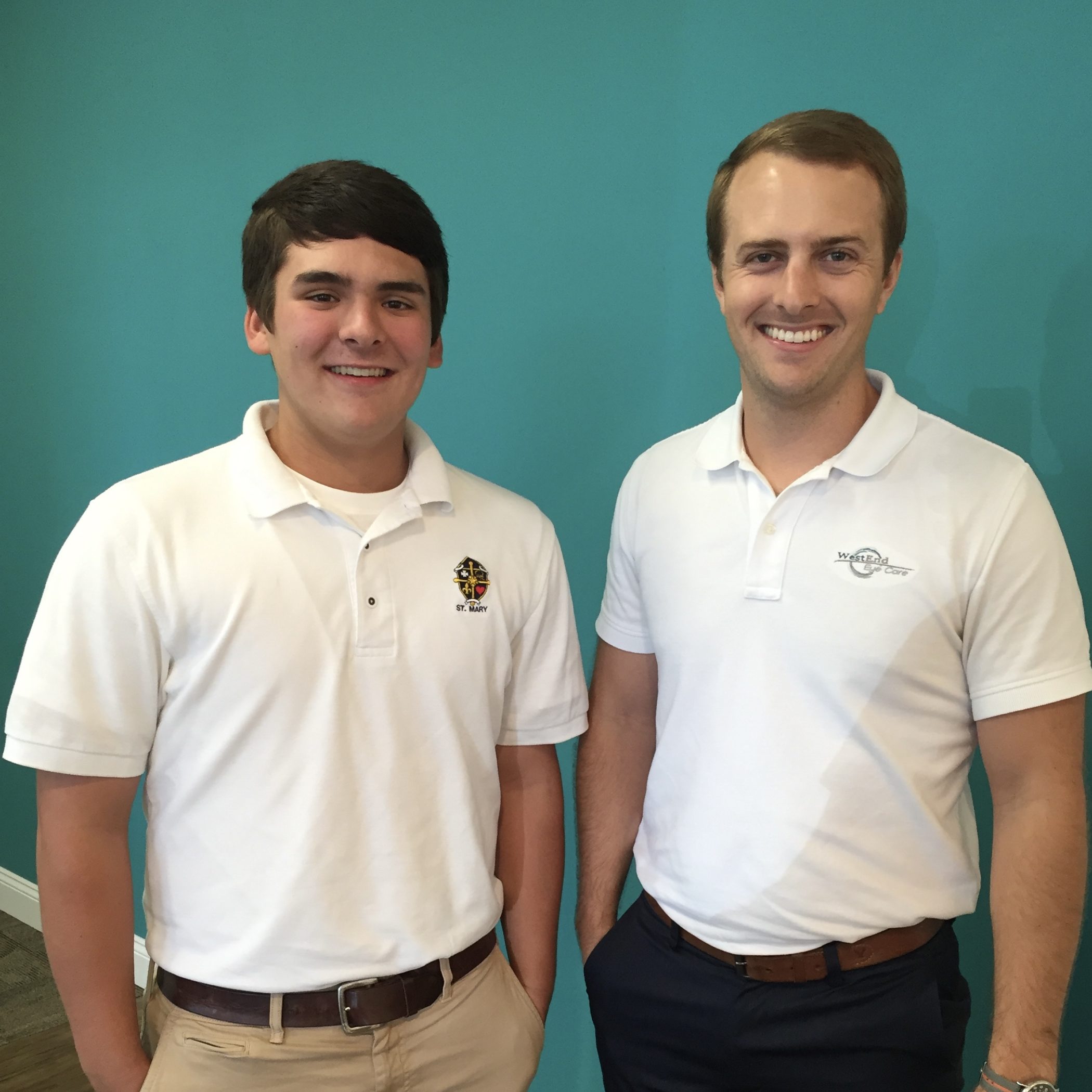Myopia: An Epidemic
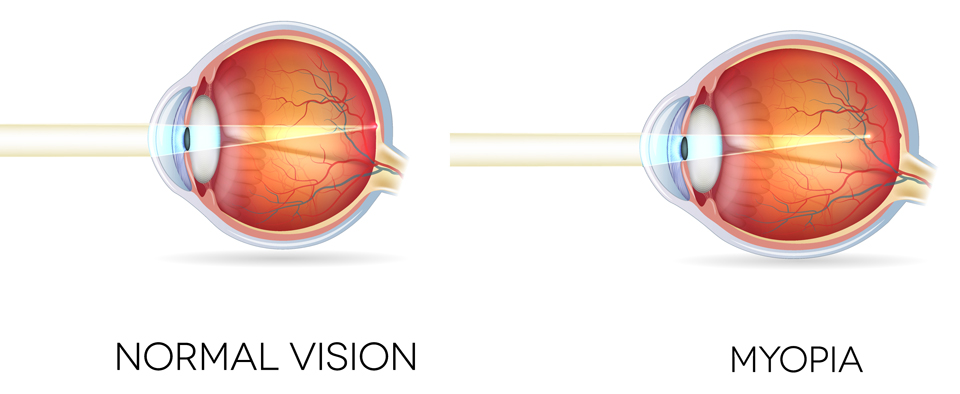
Myopia, commonly known as nearsightedness, occurs when the eye becomes elongated, distorting the focus of incoming light. As children grow, their eyes elongate, leading to worsening nearsightedness year by year.
%
Of Americans HAVE Myopia
%
Of Americans WILL HAVE Myopia by 2050
Are you or your child one of them?
Blurry distance vision and a heightened risk of debilitating eye diseases are the result of not treating Myopia.
Types of Myopia Control

Soft Multifocal Contact Lenses
Soft multifocal contact lenses are identical in feel and wear to normal soft contact lenses.
Learn More
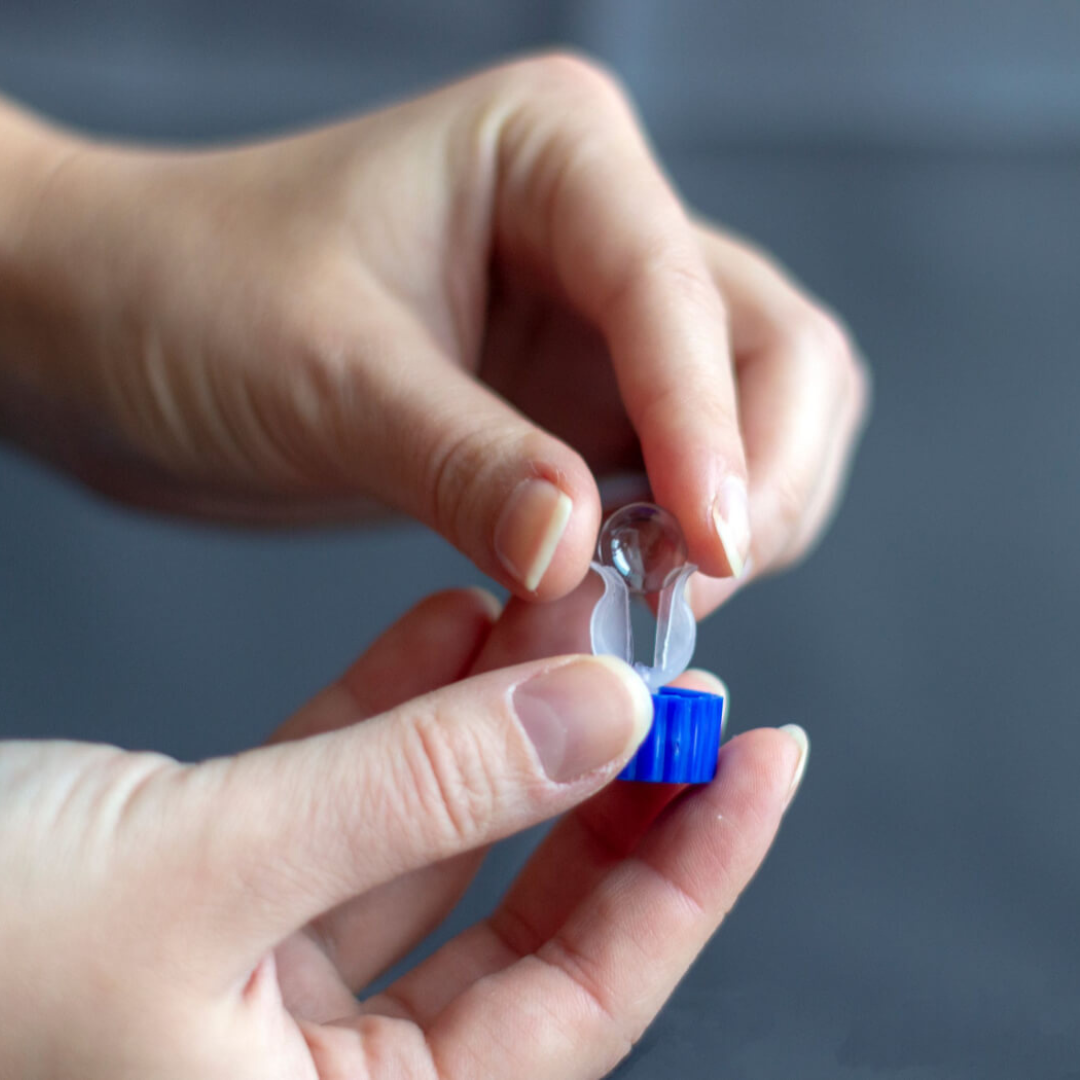
Orthokeratology (Ortho-K)
Ortho-K are custom contact lenses that are worn only at night.
What is Ortho-K?
FDA approved, custom-designed corneal retainers gently reshape your eye’s front surface, providing clear vision without glasses or contacts. Using advanced measurements from a corneal topographer, Dr. Montgomery or Dr. Hawks creates a personalized reverse geometry lens for optimal results. Sleep with the retainers, wake up to sharp vision!
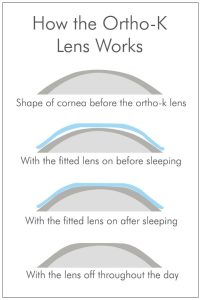
These lenses exert gentle pressure on specific areas of the cornea, prompting the redistribution of fluids and resulting in a change in its overall shape. Thanks to the remarkable elasticity of the cornea, it readily adapts its shape when these lenses are worn.
There are three important things to note about Ortho-K:
- It’s not permanent: The moment you take your lens out, your corneas revert to their original shape once Ortho-K lenses are removed, regardless of the duration of lens usage.
- No Irritation: Although the retainer puts pressure on the central part of your cornea, it never actually touches the central cornea, so a well-fitted lens will never injure the cornea.
- Microscopic Changes: Tiny adjustments to your cornea can lead to significant improvements in vision correction—just a 20-30 micron change, thinner than a single sheet of paper!
Am I A Candidate?
Ortho-K may be suitable for:
- Correcting up to -6.00 Diopters of myopia in both children and adults, including children as young as age 6.
- An excellent non-permanent and cost-effective alternative to LASIK, without any eye cutting involved.
- Ideal for individuals with dryness issues with traditional soft contacts, and those who are not candidates for LASIK.
FAQ's
What is a Corneal Retainer Mold?
The Corneal Retainer Mold looks similar to a contact lens, although it is smaller than standard soft contact lens. It is a rigid, oxygen-permeable lens that is completely custom-designed to fit your eye and provide the correct amount of treatment.
Are the Corneal Retainer Molds easy to insert? Are they comfortable?
The Corneal Retainer Molds are easy to insert, comfortable to wear, and handle like regular contact lenses. They cause no discomfort during sleep and minimal awareness while awake, without any pain.
How does Ortho-K work?
Ortho-K uses custom retainers to reshape the cornea by 20-30 microns, redistributing water to achieve clear vision without glasses.
How long does the reshaping effect last?
The reshaping effect of Ortho-K can last a full day or more, with some patients enjoying 20/20 vision for 2-3 days after removing the lens. Wearing retainers every other night may be sufficient for maintaining results.
What happens if I stop wearing the retainers?
If you stop wearing the retainers, your cornea will return to its original shape, as will your vision, within a period of several days, even if you have been wearing retainers for years. Ortho-K is NOT permanent—that’s what’s so great about it!
Is Ortho-K safe?
YES! Ortho-K is a safe and reversible FDA procedure. Like regular contact lenses, there’s a small risk of eye irritation or infection, treatable with eye drops. Adhering to a strict hygiene and cleaning routine for retainers minimizes most Ortho-K complications. No long-term side effects have been observed, even after decades of use by many patients.
How does Ortho-K differ from LASIK?
LASIK is a refractive surgery that aims to improve vision to 20/20 without glasses or contacts. Unlike Ortho-K, which temporarily reshapes the cornea, LASIK permanently reshapes it using a laser. While LASIK offers excellent vision for many older patients, it is not recommended for individuals under 20 years old.
I have Myopia (near-sightedness) and my prescription gets higher every year! Can Ortho-K help?
YES! Ortho-K has been shown to effectively slow myopia progression, with some patients experiencing a complete halt. High myopia poses risks like retinal tears, detachments, and other eye health issues. Additionally, thicker and more challenging glasses/contact lenses become a hassle.
Can children wear Ortho-K retainers?
Absolutely! In fact, many of our Ortho-K patients are children. Because of its ability to slow or stop myopia progression, children who are becoming nearsighted are especially good candidates for Ortho-K.
I’ve never heard of Ortho-K. Do most doctors offer Ortho-K?
Most optometrists are trained in contact lens fitting, but few acquire the necessary expertise and equipment to design and manage Orthokeratology programs. Dr. Montgomery and Dr. Hawks prioritize individualized patient care, dedicating more time to offer comprehensive Orthokeratology programs.
How long does it take to reshape my cornea?
In most cases, the target shape of Ortho-K is reached in 7-10 days. Larger prescriptions take longer to reach the maximum effect, while smaller prescriptions may be fully corrected after just one night of wear.
If it takes a week to reach the full effect, how will I see in the meantime?
If it is anticipated that full correction will take a week or longer, Dr. Montgomery or Dr. Hawks will prescribe you low-powered soft contact lenses to wear during the day for the first week. This will only be a temporary solution until the cornea has reached its intended shape.
Can I see while wearing my Ortho-K retainers?
Yes. No matter what time of day, you will always have perfect vision with your retainer.
How often do I need to replace my retainer molds?
Retainers are replaced every 12 months.
What is the cost for Ortho-K?
For new Ortho-K patients, we charge a global fee that includes all prescribed Ortho-K visits during the first year as well as retainer molds and insertion and removal training. The total cost varies, depending on many factors, and can be discussed at the consultation.
Does my insurance cover Ortho-K?
Neither vision nor medical insurance covers Ortho-K.
Ortho-K Links
Ortho-K info:
American Academy of Orthokeratology and Myopia Control (AAOMC)
Ortho-K Videos
Insertion and Removal Help:
Ortho-K Insertion and Removal Video
Scholarly Articles on Ortho-K and Myopia Control:
The Children’s Overnight Orthokeratology Investigation (COOKI) pilot study
Retardation of myopia in Orthokera- tology (ROMIO) study: a 2-year randomized clinical trial
Corneal reshaping and myopia progression
Myopia and associated pathological complications
Myopia control: the time is now
The risk of microbial keratitis with overnight corneal reshaping lenses
Long-term clinical outcomes for overnight corneal reshaping in children and adults
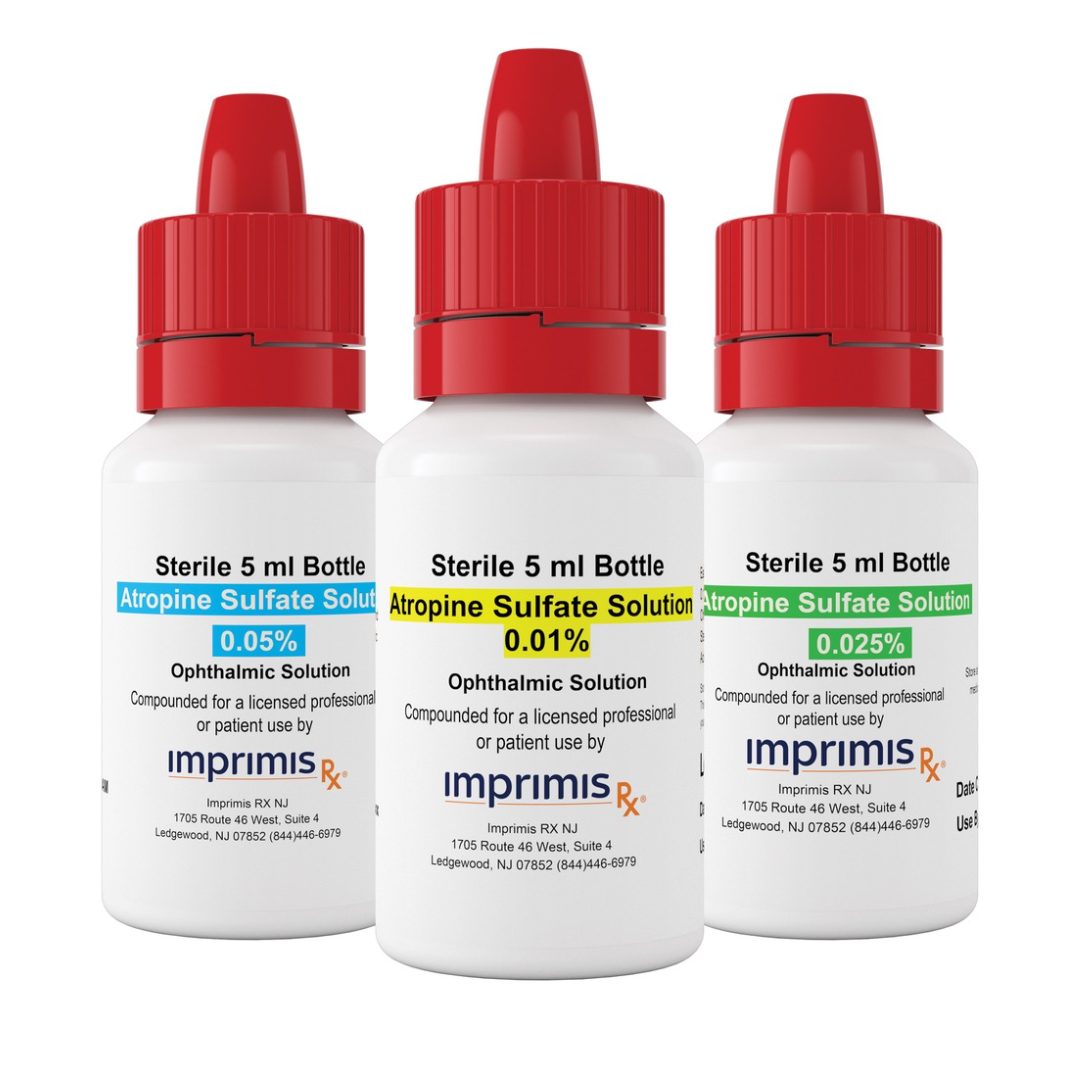
Atropine Drops
Atropine is medication used in some dilating drops.
Learn More
Your child's increased risk of becoming myopic:
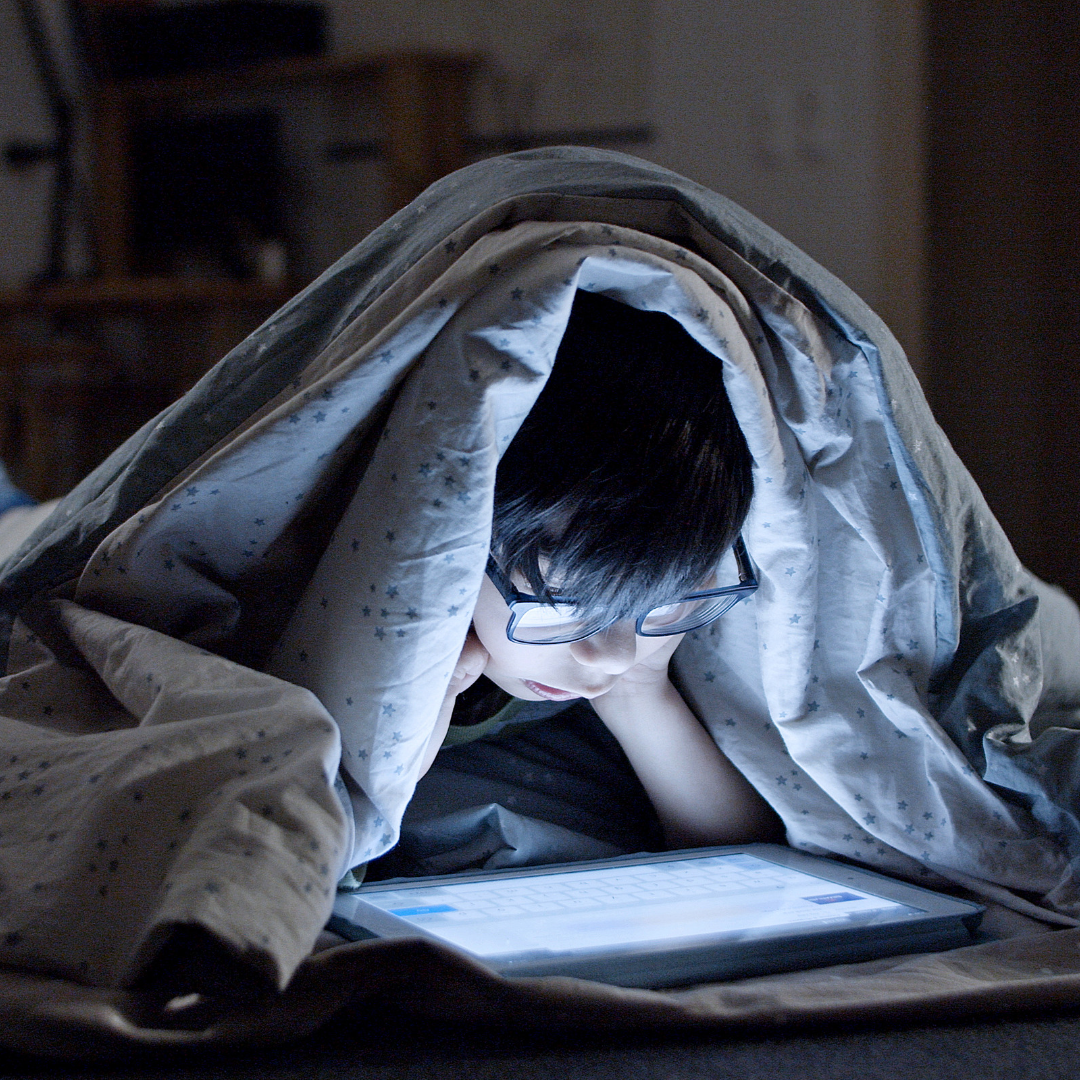
w/3hrs of screen time & less than 90 min of daily outdoor time

One Myopic Parent

Two Myopic Parents
With an Rx greater than -6.00D, your risk of blinding eye diseases increases:
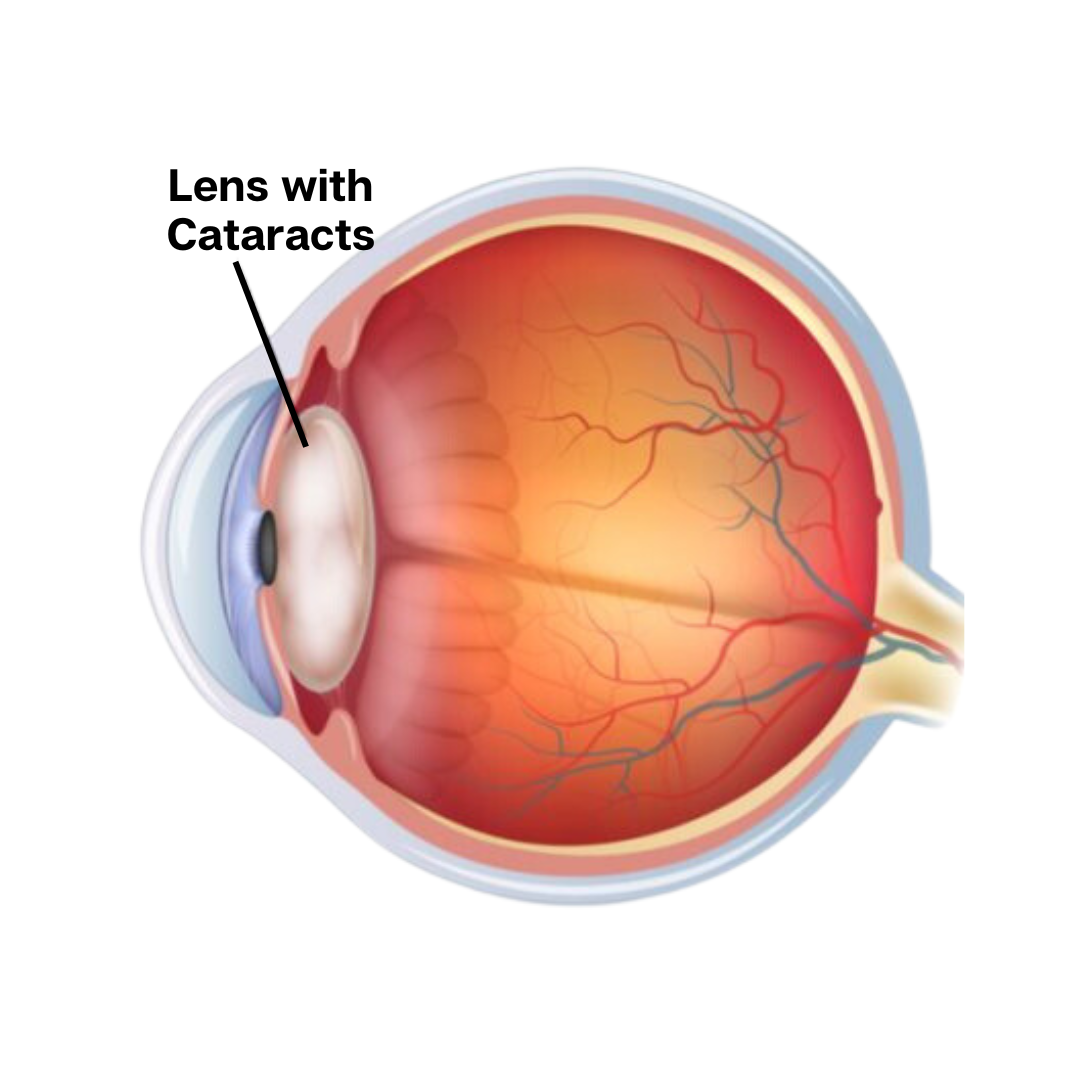
PSC Cataract
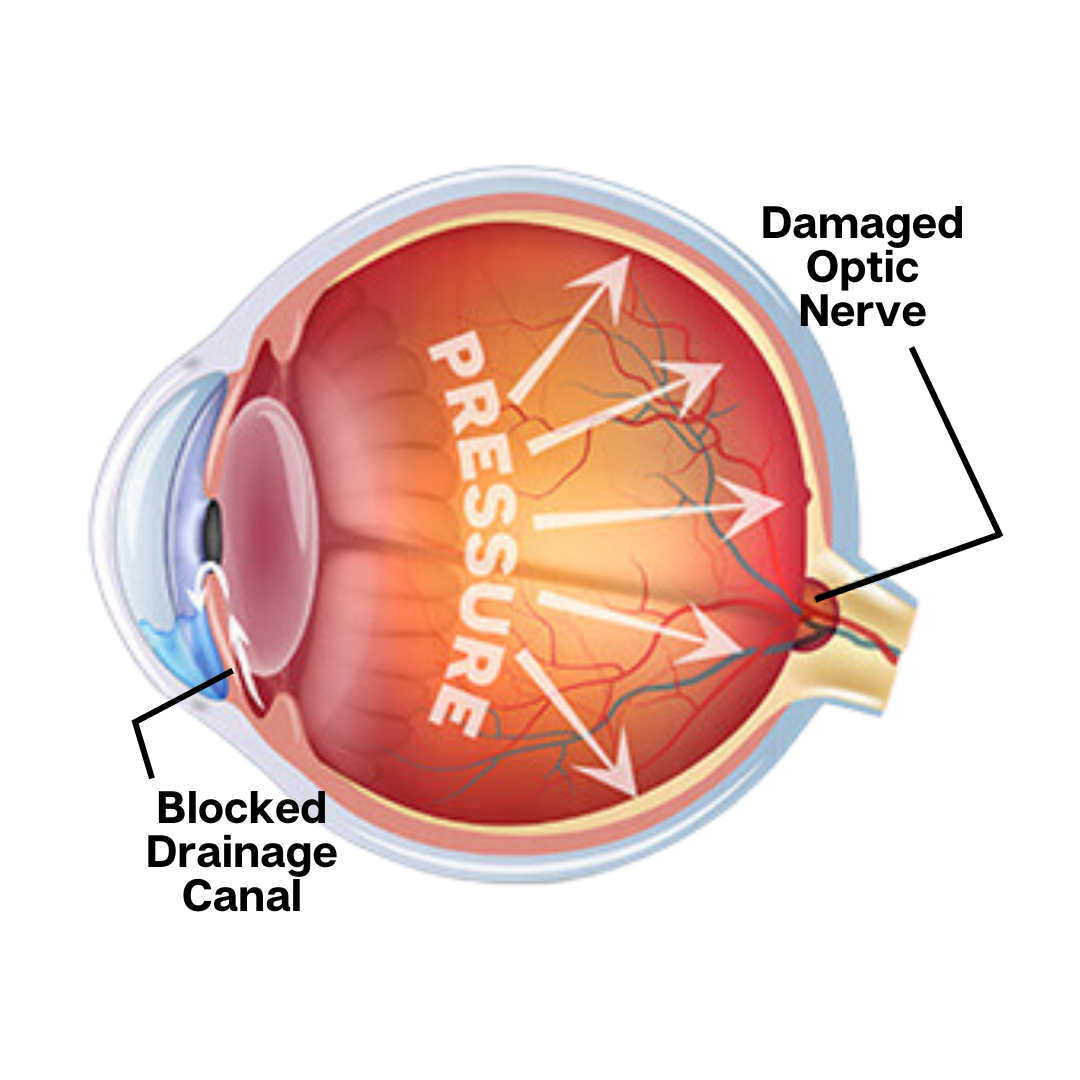
Glaucoma

Retinal Detachment
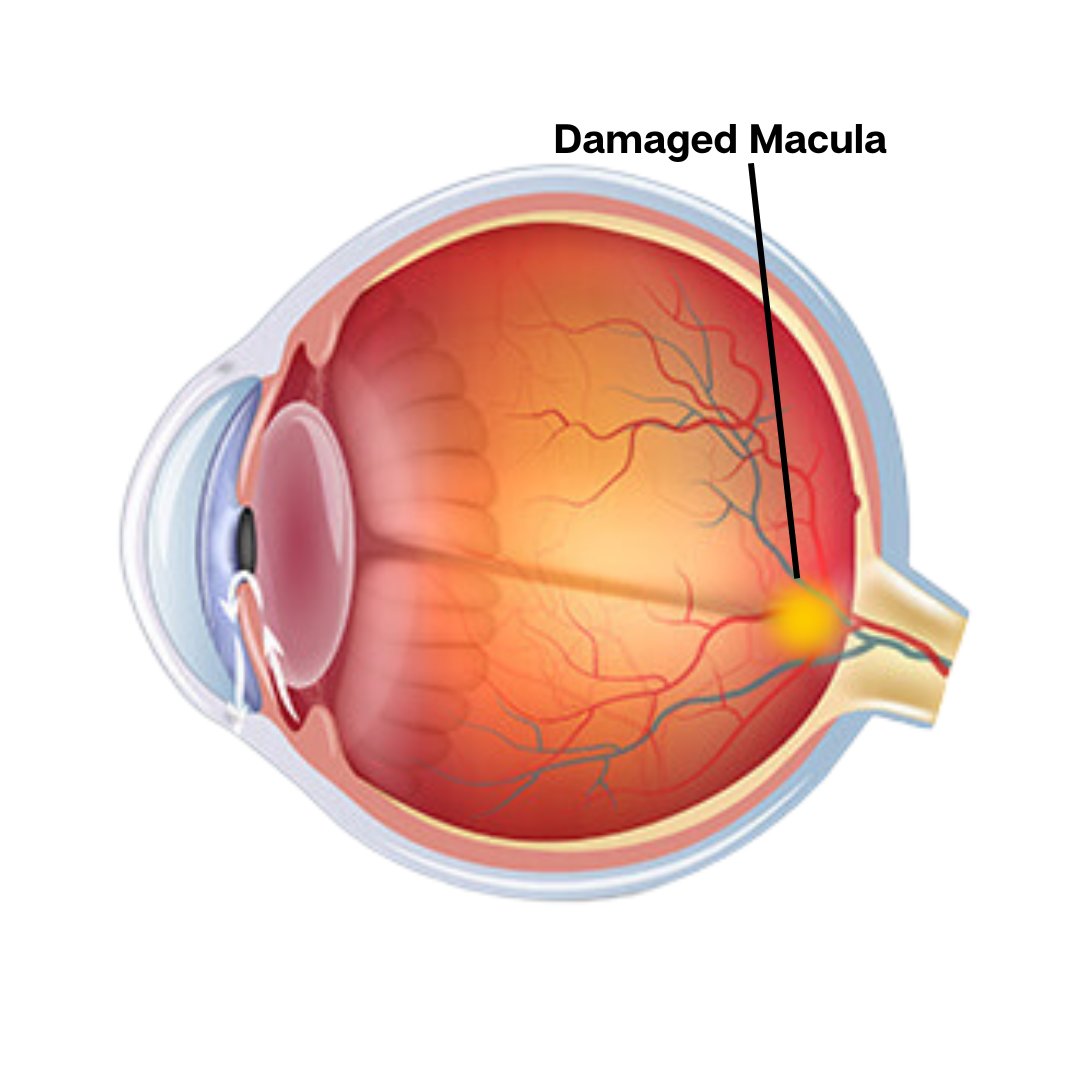
Myopic Maculopathy
How Nearsighted Will I Get?
Use the calculator below to estimate progression with and without intervention
Dr. Montgomery featured on the news discussing Myopia control
Downloadable Myopia Guide
